For BMW’s X1, it seems like third time’s a charm. Previously the BMW X1 leaned heavily on the badge on its bonnet. It may have carried the X moniker of the German brand’s SUV range, but this only ever looked like its bigger siblings from a distance. A far distance.
The first generation, introduced back in 2009, was accused of being little more than a raised estate. That did a disservice to estates, which were never as cramped in the back as this little crossover.
The second generation made some big improvements, but had its flaws. The ride quality was choppy and the end product didn’t match rivals like the Volvo XC40.
Now, finally, comes an X1 that merits serious consideration by crossover customers and can go tyre-to-tyre with the Swede and its ilk.
READ MORE
Unlike other rivals, the X1 is also available in the full variety of flavours: from petrol and diesel to plug-in hybrid and the fully-electric iX1 version.
At an early test drive event, we got to test the iX1 and with a claimed range of 438km, all-wheel drive and a 0-100km/h time of just 5.6 seconds, it won us over. It might not land in showrooms here until later in the year, but if you can live within a 400km charging range – and have decent access to charging – then it would be the one to choose. Alternatively, BMW offers the plug-in hybrid version claiming a range of up to 85km on full-electric before it reverts to a 1.5-litre petrol engine for power. It also manages a 0-100km/h time of just 5.6 seconds.
For this test we drove the xDrive 23i powered by a two-litre petrol engine supported by a 48-volt mild-hybrid set-up putting out a combined 218bhp. After decades where crossovers and SUVs were only offered with diesels, it’s great to get back to petrol power. For all the advances in diesel technology, they never managed to match the smoothness or sweet engine sound of petrol engines.
The price may be paid in fuel economy, but this X1 didn’t prove too thirsty. BMW claims an official fuel economy of 6.9l/100km (40.9mpg) and over a 500km test we averaged a respectable 7.4l/100km (38mpg).
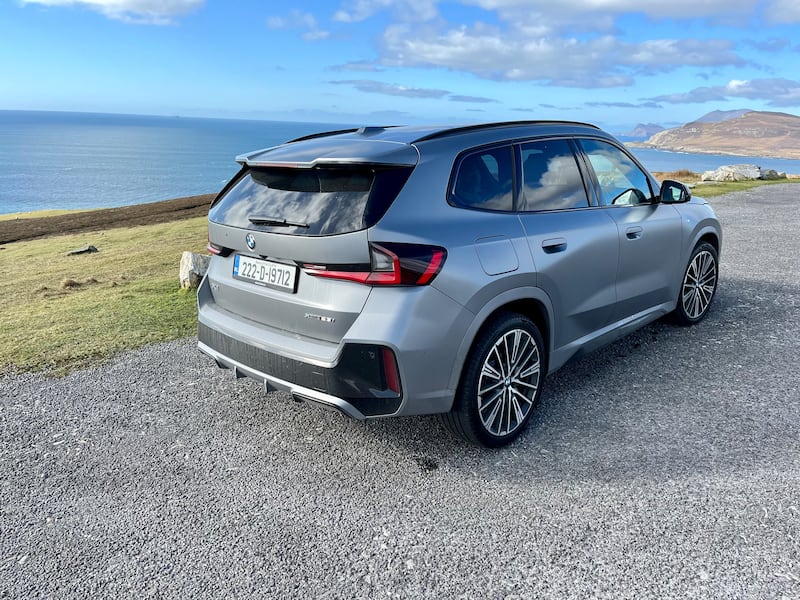
On national routes the ride is smooth and refined, but it proves a little choppy on poorly surfaced back roads. The trade-off for a relatively tougher ride is the X1′s impressive agility on the bends. It nuzzles down to the tarmac and avoids excess body roll in a way that most other similarly sized crossovers for this price can’t match.
We have debated with international colleagues on the merits of the X1′s steering, with some finding it a little anodyne, particularly for a brand that prides itself on driving pleasure. We have to disagree as, during our test drive, we found it impressively adept at tackling the tight and twisting back roads of Ireland. True, it tends towards understeer and the ride can be firm at times, but overall it delivers a nice balance of performance, accuracy and refinement.
[ BMW unveils the i Vision Dee: a colour changing, emotionally connected carOpens in new window ]
Opting for the plug-in hybrid adds another 200 kgs to the car’s weight, and that is clearly going to impact its agility. Yet, when we tested the heavier all-electric version several months ago, we found it better balanced than even this lighter petrol version.
The biggest surprise for many who encounter the new X1 is the size; this small crossover is a worthy alternative to the current X3 in all but height.
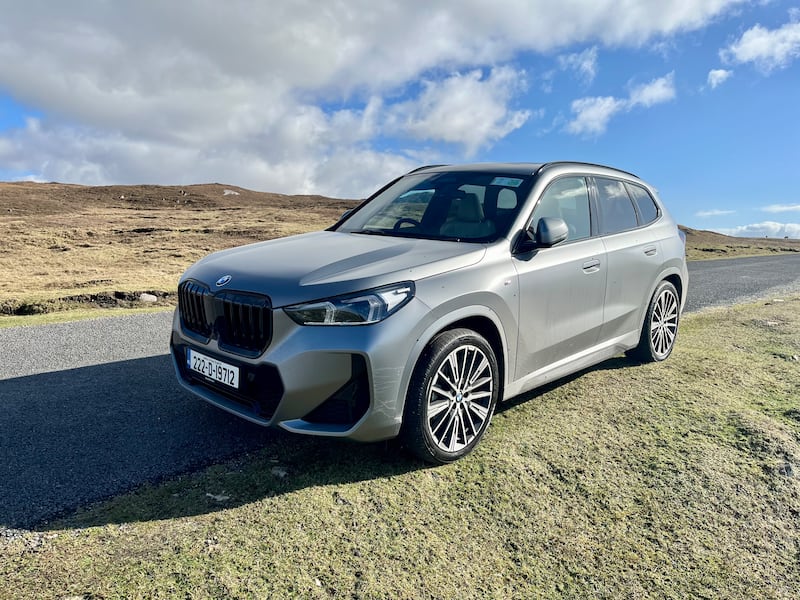
A word about the paint option, which is not something we often refer to in reviews. This frosted grey is gorgeous. Colour is very subjective and prone to fashion trends. The matt black that was all the rage some years ago looks a bit naff now. This frosted grey may well suffer the same fate, but for now it’s our favourite, even if it added more than €3,000 to the test car’s price. Of course, it’s easy to say that when you’re playing as the owner rather than paying as one.
Back behind the wheel, BMW deserve praise for adding the boost function to its cars. That extra throttle response you get in sports mode was always there but buried in a menu or a fiddly dash button that was rarely touched by owners. So a big feature went unused.
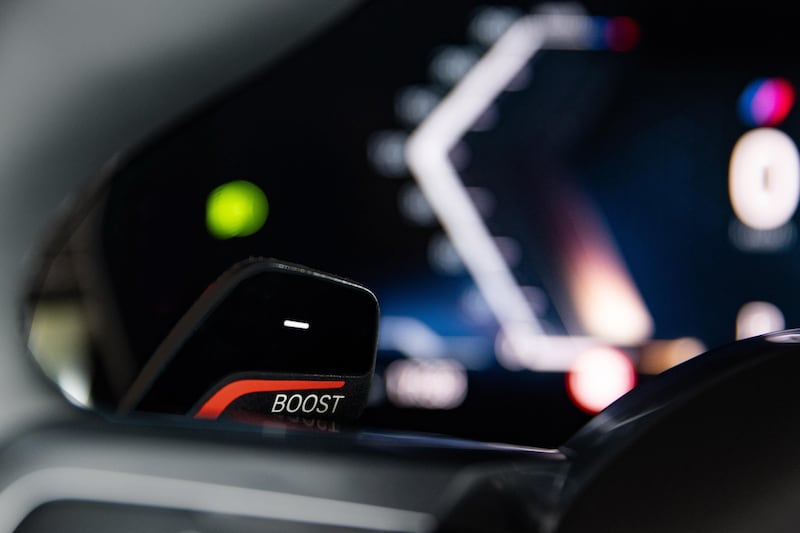
Normal mode suits normal driving, which is what we all do most of the time. However, when you want that extra pace and response when overtaking a tractor, for example, you don’t have time – nor is it very safe – to go searching through screen menus to find the right mode.
Here, you flick the paddle on the steering wheel and for 10 seconds you get the benefits of sports mode. After that – once you’ve passed the tractor – you are back in normal mode again. Other manufacturers should take note.
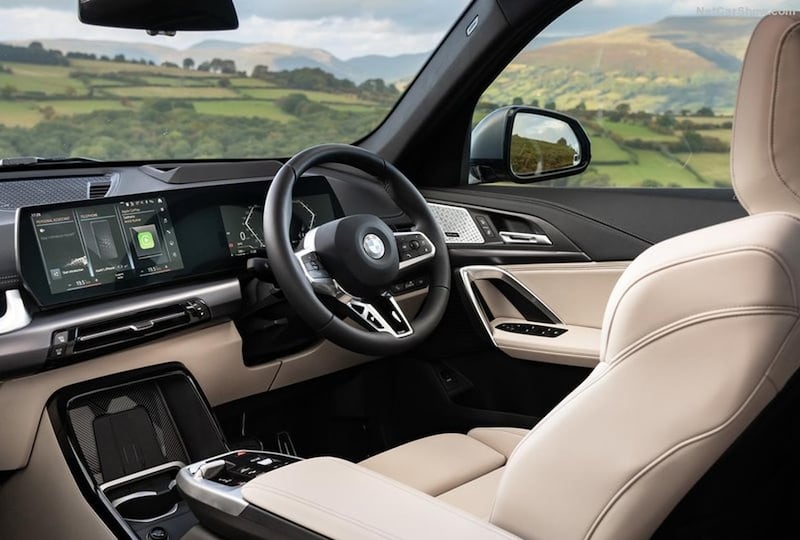
Elsewhere in the cabin, simplifying controls has also led to the demise of the iDrive dial, made largely redundant by the advent of touchscreens. Critics of the X1 – and there are several – hark on about the missing iDrive, but it lost much of its usefulness years ago. Instead, the armrest controls are a mix of buttons and a proper volume control. It’s all practical, intuitive and unfussy.
That said, the BMW’s touchscreen user interface, which has multiple menus, still needs a lot more work. It’s the curse of all BMW’s these days, there are far too many icons on each menu page and it ends up looking like the desktop of a teenager’s laptop. The Germans desperately need to hire some user interface techies to clean it up.
While the previous X1 was cramped in the back and looked oddly shrunken on the road, this new version offers ample rear-seat legroom, top-end boot-space and a stylish design. The layout of the interior is better than before and, although some of the plastics don’t match the price tag, it delivers enough dynamic driving appeal to justify the BMW badge on its bonnet. Finally, it comes in all flavours from regular petrol to full electric.
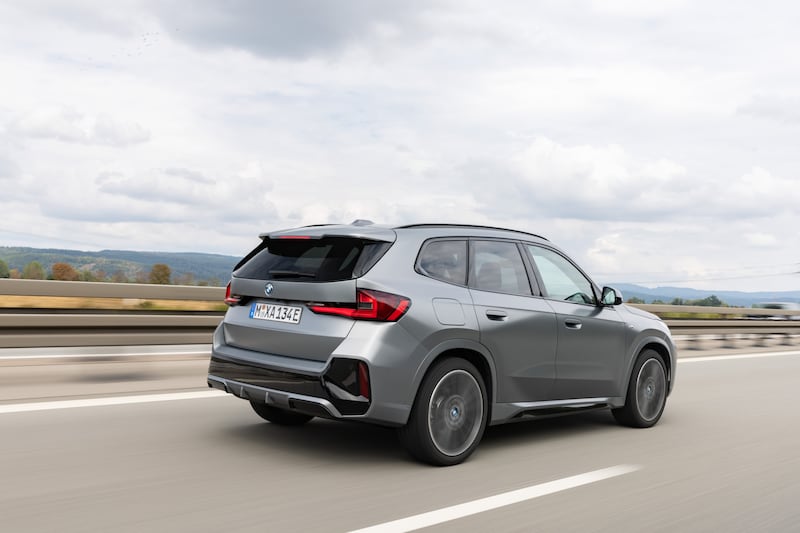
This X1 has received mixed reviews since its launch, but after criss-crossing this country in it from north to south and east to west, it was hard to part with the car at the end of the test. It’s incredibly easy to live with, while delivering enough premium touches to warrant the extra spend, particularly when you pit it against a series of bends.
Prices start at €48,620 for the 1.5-litre petrol model, but begin adding features or power and the cost soars. Our two-litre petrol 23i M Sport was already €69,111, before adding the frozen grey paint at €3,214 and upgraded leather seats at €1,760. With a few other features the final total came to €76,273. Lured to spend by the thought of a €50,000-plus car, you can see why some buyers might turn a frozen grey themselves when faced with the final bill.
Ultimately the X1 has an edge on its rivals for now, arguably a viewpoint influenced as much by first impressions of the iX1 as time spent in the petrol and diesel versions. It’s enjoyably quick, spacious and nicely styled both inside and out. It might have taken three generations to get here, but BMW can finally boast an entry-level crossover worthy of the badge.
Lowdown: BMW X1 xDrive 23i M Sport
Power: 1998cc four-cylinder petrol engine combined with 48-volt mild-hybrid motor putting out a combined 218bhp and 360Nm of torque. Also features four-wheel drive and a seven-speed automatic transmission
CO2 emissions (motor tax): 154g/km (€280)
0-100km/h: 7.1 secs
L/100km: 6.9 (40.9)
Price: €69,110 (€76,272 as tested)
Rating: 4/5
Our verdict: Finally a BMW entry-level crossover worthy of the badge














